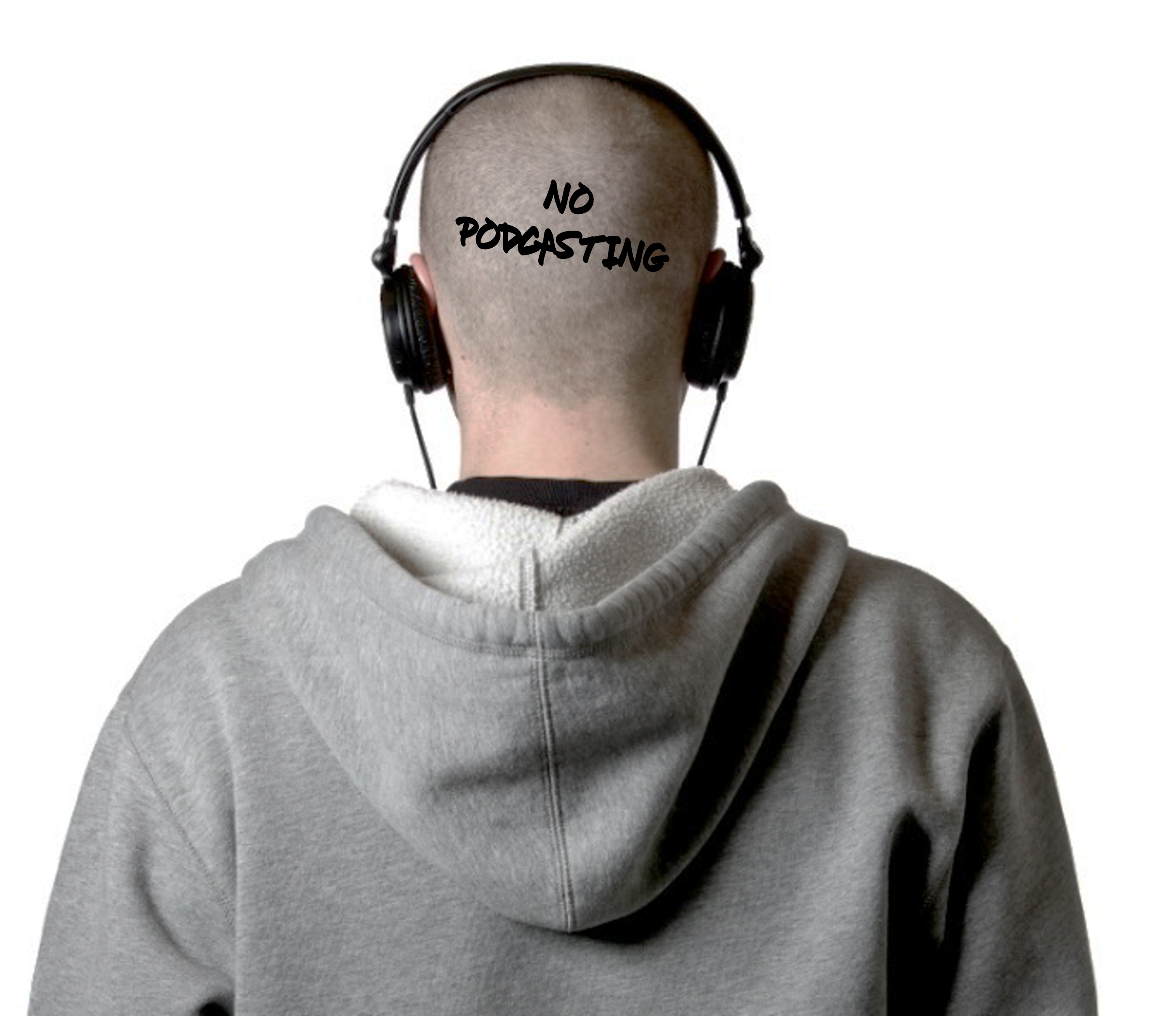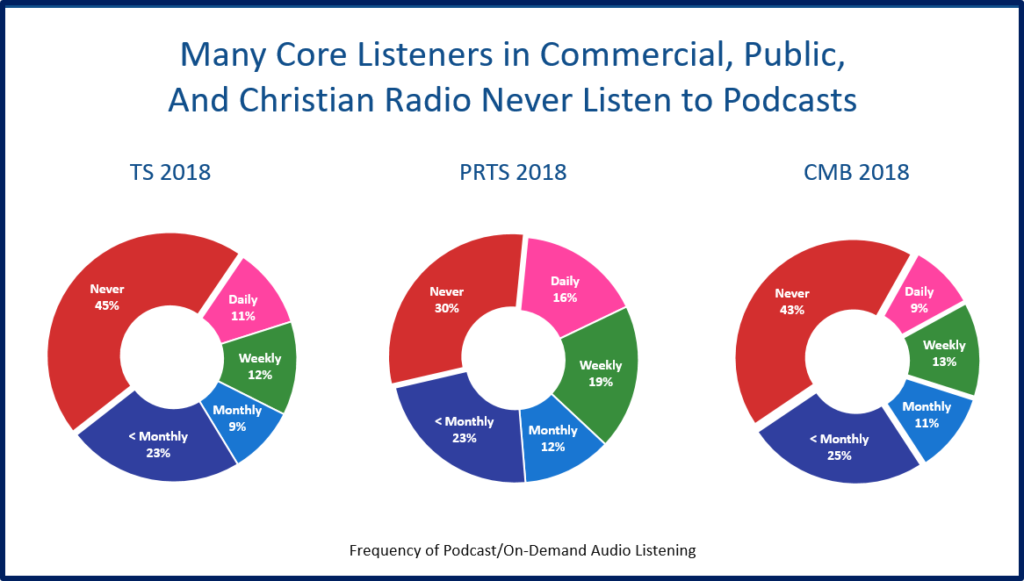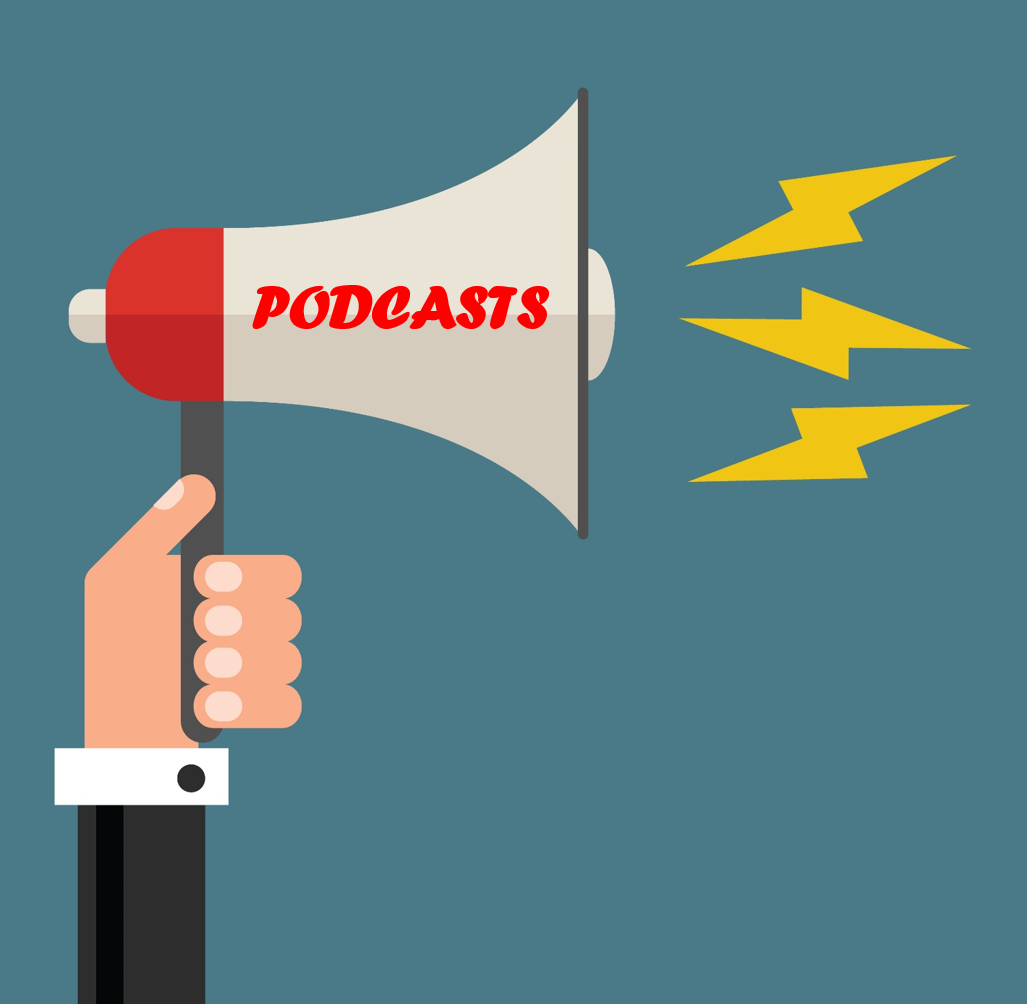
The big news in Podcasting World last week was the latest revelation from the Infinite Dial study. It turns out half of Americans have now listened to a podcast.
And this is a tipping point?
That’s like saying that half of consumers have tried sushi. Sure, it’s promising, but it doesn’t it make raw fish wrapped in rice a mainstream cuisine.
The fact is, podcasting is very much a work in progress even though most historians chart its debut in 2005. And in spite of the millions of dollars now being poured into podcasting from deep-pocketed, starry-eyed investors, the medium is still not moving at a very fast adoption pace.
That’s especially true if you buy into the on-demand video comparison. Thanks in no small part to YouTube (which also showed up in 2005), and then Netflix shifting from DVDs in red envelopes delivered by the U.S. Postal Service to streaming video, there’s no comparison between the two platforms.
Depending on whose research you consult, an awful lot of people are still not even experimenting with podcasts. We’ve seen this same phenomenon in our three Techsurveys – commercial, public, and Christian music radio – this past year. A majority in all three sectors have listened to a podcast. But a much larger majority of podcast consumers exists in the world of public radio than anywhere else.

Why is that? And what does it portend for podcasting’s future?
You could make the case that it all starts with content. And in this regard, public radio was well ahead of the radio pack in making some of the best shows in its lineup available in podcasting form. Many have discovered programs like “This American Life,” Wait, Wait…Don’t Tell Me,” and many others via podcast – rather than broadcast.
You might also hypothesize that as a result, public radio stations – led by the big networks like NPR, PRI, APM, and PRX – have simply promoted podcasting with more regularity and passion – especially compared to commercial radio where podcasting promos have traditionally been somewhere this side of non-existent.
And finally, public radio had a podcasting hit – a massive hit, in fact. “Serial” was that breakthrough, produced not coincidentally by the “This  American Life” team. Most podcasting producers today point to “Serial” as the North Star event that helped put podcasting on the map.
American Life” team. Most podcasting producers today point to “Serial” as the North Star event that helped put podcasting on the map.
At least for about half the population.
But “Serial” is nearly five years-old, and has not been succeeded by a wave of mass appeal podcasts. It has spurred the True Crime genre, spawning similar podcasts, some of which are excellent. But none has come close to matching the excitement and downloads generated by Season 1 of “Serial.”
At Jacobs Media, we have spent the last several years bringing together the broadcasting and podcasting worlds at the Podcast Movement conferences. Our aptly named “Broadcasters Meet Podcasters” track of sessions, panels, and keynotes have featured some of the biggest names in both industries.
Often, commercial broadcasters – in particular – have felt behind the curve when it comes to figuring out the podcasting maze. And not surprisingly, nothing resembling a true hit has been produced by any of them. That’s part of the reason why companies like iHeart Media and Entercom and Hubbard have either purchased successful podcasting enterprises – like How Stuff Works – or invested deeply in other podcasting platforms – like Cadence 13 and Podcast One respectively.
So, are hit podcasts going to ever be produced by DJs, shows, hosts, and programmers of commercial broadcasting stations and companies?
If the answer is “no,” what then is the role of commercial broadcasters in the podcasting space?
Perhaps, it’s the megaphone. 
If you accept the notion that podcasting has a top-of-mind awareness problem, then the deficit may be in the marketing department. As public radio’s history with podcasts has shown, when you promote great audio on-demand content, listeners positively respond.
On the commercial radio side, there’s been scant on-air or off-air marketing of podcasts. Or it’s been clumsily executed.
That’s why a small item this week in Don Anthony’s “Jockline Daily” caught my attention. It turns out iHeartMedia is experimenting with on-air marketing in a unique and clever way.
They’ve flipped an AM radio station in Allentown, Pennsylvania to an all podcasting format. According to Radio Facts, this radio experiment will feature round-the-clock podcasts from iHeart’s stable in an obvious attempt to see if commercial radio can be effective in selling more than mattresses, jewelry, cars, insurance, and debt relief services.
Credit to the iHeart team for making a bold step, but an AM station? In Allentown?
Perhaps like the old adage, “If it plays in Peoria,” the idea is that if this radio station can move the needle in a market like Allentown, it might work anywhere.
And that may, in fact, be the idea. Broadcasters have no shortage of hapless, hopeless, full-signaled FM stations, often meandering from one lame format to another. What’s the downside of picking a couple of attractive markets, and popping on the all-podcast stations on solid FM signals where they have a chance to attract an audience – and much-needed attention for podcasting.
It just might help define commercial radio’s contribution to podcasting’s next level of growth. Instead of thinking about podcasts as a content play, perhaps these broadcasters begin to look at their stations as distribution solutions.
And maybe, just maybe at our “Broadcasters Meet Podcasters” sessions at Podcast Movement this summer, we’ll have a panel where radio broadcasters – commercial and public – can revel in their podcasting success.
At least, get us over the 50-yard line.
Information about Podcast Movement and Jacobs Media’s “Broadcasters Meet Podcasters” is here.
- What To Do If Your Radio Station Goes Through A Midlife Crisis - April 25, 2025
- A 2020 Lesson?It Could All Be Gone In A Flash - April 24, 2025
- How AI Can Give Radio Personalities More…PERSONALITY - April 23, 2025




Like any format, Podcast Radio demands smart curation for expert presentation. But hasn’t Talk Radio been the original & real professional podcast for years?
Clark, maybe yes. But the question is how to convert that content into viable podcasts.
I think the revenue growth is what’s driving the increase in interest within the industry. Although audience growth and revenue growth generally go hand in hand, monetizing podcasts is a different monster than selling radio ads. Distribution is fairly easy to access for anybody. Marketing, promotion, and sales are the more difficult nuts to crack, and in my opinion, the place where radio can have the greatest role. Creating decent content is probably out of the question for most radio companies. It requires an investment in people. Voices, writers, producers… all positions radio has spent the last few decades cutting from the payroll. Sure, there’s always the possibility of throwing 2 people in a studio to riff for 30 minutes and maybe it will catch on, but hits from that model are few and far between. Maybe creating partnerships with existing content creators and influencers is a possibility, but may still require an investment. Access to radio’s large and loyal audiences through marketing with a profit share is probably where radio can best play an efficient and meaningful role.
We’re very much thinking along the same lines, Bill. Broadcasters have to determine what level of paraticipation they can have with podcasting. Their megaphones are a key marketing element that most podcasters dond’t have. Good to hear from you.
Fred, credit goes to Jeff Hurley and our Allentown team who have been wanting to do this for some time now. It might be an AM, but I applaud them for trying something new.
As do I, Tony. It’s wonderful when an innovation starts from the bottom up. I hope it works & I hope you do more of these.
Love the discussion…it seems radio can follow the video model? People I’ve witnessed like the on demand/convenience angle . along with building a great on air show, build an equally great on demand show. promote that as heavily with the “listen when/where you want” angle high frequency promotion/high status
i think that’s what you’re saying right?
inspired!
Ken, that’s a big part of it, yes. On-demand radio should be a big deal – as big a deal as the video model. But producing, distributing, marketing, and monetizing podcasts is not a simple proposition. Thanks for reading the blog post and commenting.